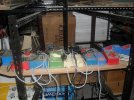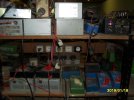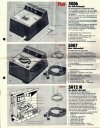So what is the risks of having a main line loop as such always powered at a good travel speed for the trains
But then the Station siding will have isolated section using the yellow track breaks for example and that section is then powered by a 1amp power supply thats set to a slower speed probably 1/3 of the main line speed or slower.
but when the train passes over the join its going for a moment to get power from 2 different sources so will this be an issue ?
But then the Station siding will have isolated section using the yellow track breaks for example and that section is then powered by a 1amp power supply thats set to a slower speed probably 1/3 of the main line speed or slower.
but when the train passes over the join its going for a moment to get power from 2 different sources so will this be an issue ?



